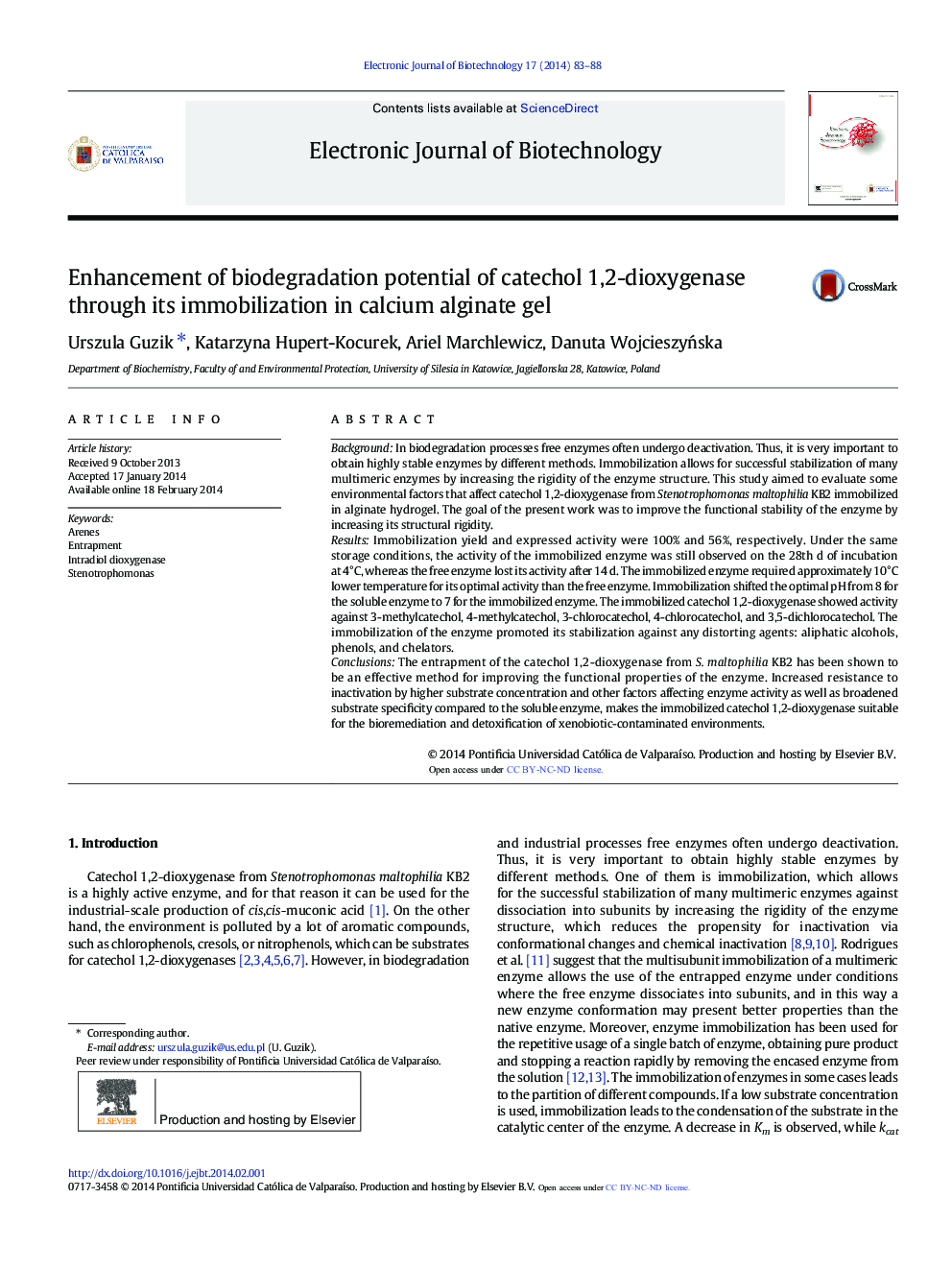| Article ID | Journal | Published Year | Pages | File Type |
|---|---|---|---|---|
| 200844 | Electronic Journal of Biotechnology | 2014 | 6 Pages |
BackgroundIn biodegradation processes free enzymes often undergo deactivation. Thus, it is very important to obtain highly stable enzymes by different methods. Immobilization allows for successful stabilization of many multimeric enzymes by increasing the rigidity of the enzyme structure. This study aimed to evaluate some environmental factors that affect catechol 1,2-dioxygenase from Stenotrophomonas maltophilia KB2 immobilized in alginate hydrogel. The goal of the present work was to improve the functional stability of the enzyme by increasing its structural rigidity.ResultsImmobilization yield and expressed activity were 100% and 56%, respectively. Under the same storage conditions, the activity of the immobilized enzyme was still observed on the 28th d of incubation at 4°C, whereas the free enzyme lost its activity after 14 d. The immobilized enzyme required approximately 10°C lower temperature for its optimal activity than the free enzyme. Immobilization shifted the optimal pH from 8 for the soluble enzyme to 7 for the immobilized enzyme. The immobilized catechol 1,2-dioxygenase showed activity against 3-methylcatechol, 4-methylcatechol, 3-chlorocatechol, 4-chlorocatechol, and 3,5-dichlorocatechol. The immobilization of the enzyme promoted its stabilization against any distorting agents: aliphatic alcohols, phenols, and chelators.ConclusionsThe entrapment of the catechol 1,2-dioxygenase from S. maltophilia KB2 has been shown to be an effective method for improving the functional properties of the enzyme. Increased resistance to inactivation by higher substrate concentration and other factors affecting enzyme activity as well as broadened substrate specificity compared to the soluble enzyme, makes the immobilized catechol 1,2-dioxygenase suitable for the bioremediation and detoxification of xenobiotic-contaminated environments.
